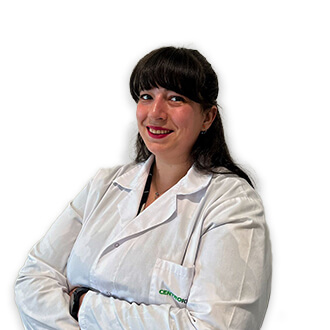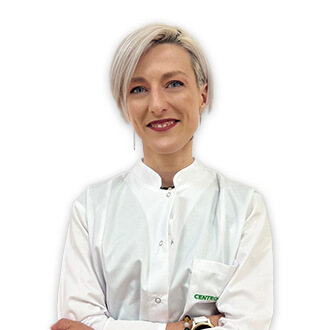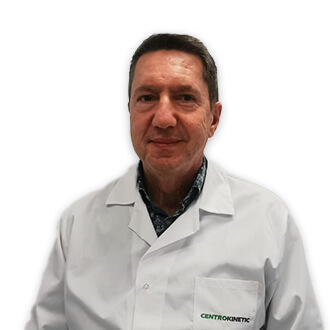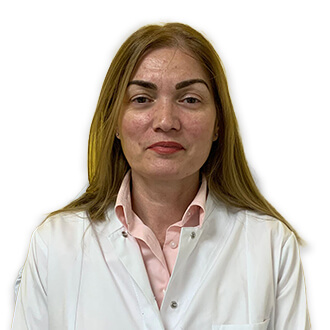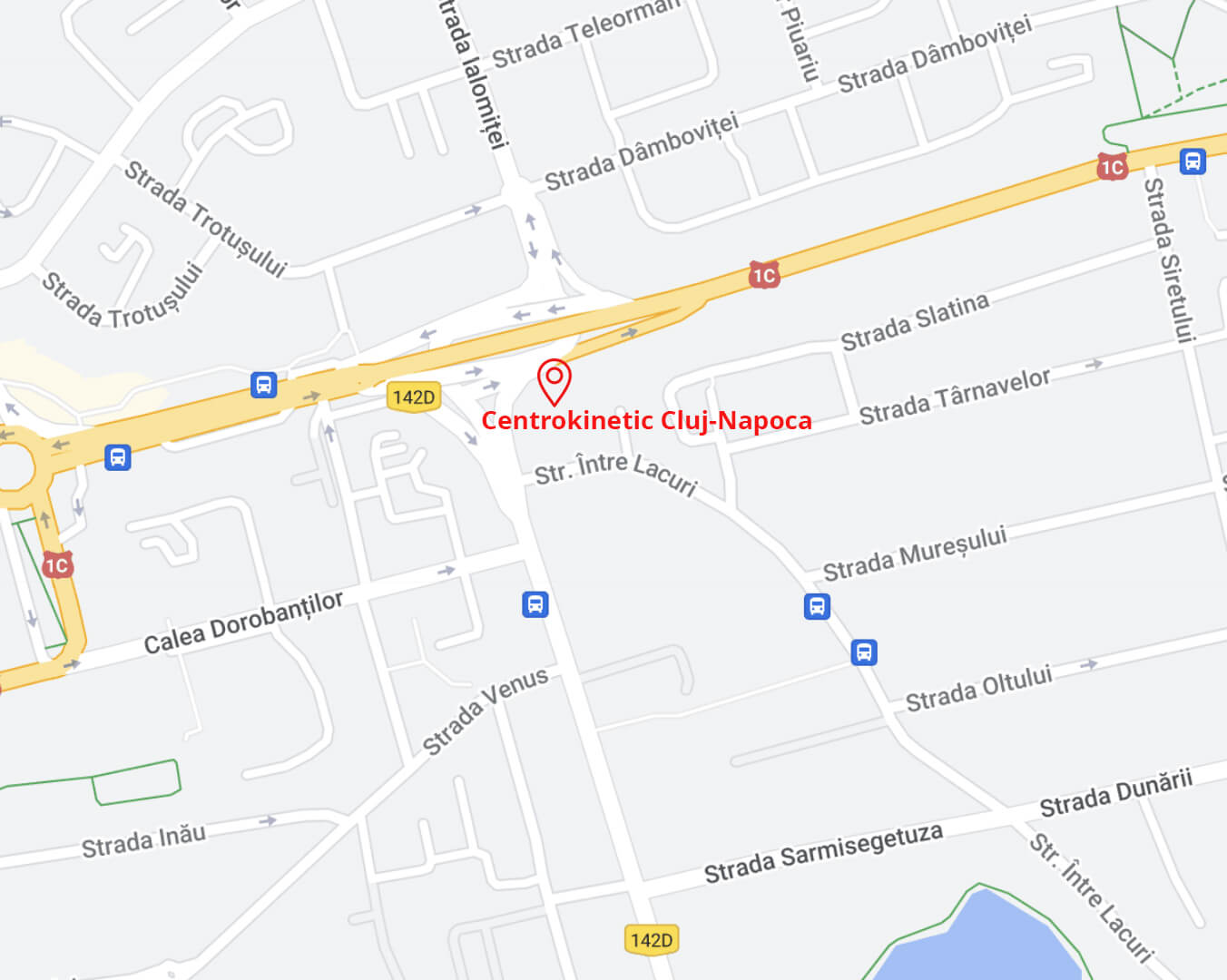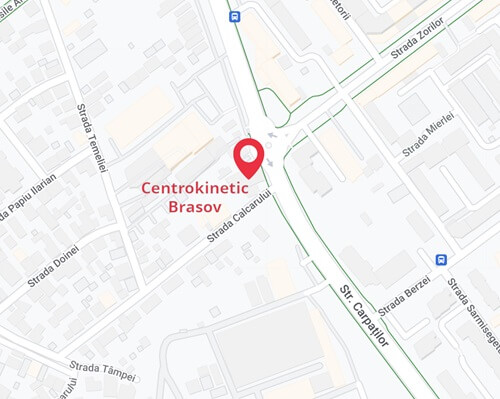Physical Exercise and Muscle Health
Physical activity or any form of movement is a necessary condition for preventing illnesses and maintaining the health of the body.
.jpg)
What is the current situation? Some data on movement versus sedentary lifestyle
1. WHO
Regular physical activity promotes both mental and physical health for people of all ages.
Today, more than 80% of adolescents and 27% of adults do not meet the recommended levels of physical activity set by WHO.
This not only affects individuals throughout their lives but also imposes a financial burden on health services and society as a whole.
The WHO Global Action Plan on Physical Activity 2018-2030 (GAPPA) provided recommendations to help countries increase physical activity levels within their populations: (1) by developing and implementing comprehensive national policies to ensure safer roads for cycling and walking; (2) creating accessible opportunities for active recreation where people live, work, and play; (3) and through consistent physical activity practice.
Four years after GAPPA, the first global status report on physical activity records progress in the country implementation of the recommendations made, aiming to achieve the global goal of a 15% relative reduction in the prevalence of physical inactivity by 2030.
2. The paper Health Status of the Population of Romania, published in 2021 by the National Institute of Public Health
Physical activity conducted in a typical week was analyzed in three aspects: (1) physical activity during work, (2) physical activity related to how the person travels to different places, and (3) recreational physical activity carried out during leisure time.
Of the total resident population aged 15 and over who work performing daily tasks (paid or unpaid work, household work, family care, studying, job seeking, elderly care, etc.), more than half reported that when they work, they spend most of their time seated or standing (60.6%), a quarter reported moderate physical effort (25%), 5.7% reported physically demanding work, and 6.8% stated that they do not engage in any physical effort or could not specify the type of physical effort according to the 2021 INSP survey.
Of those interviewed, 75% consider themselves active, while 25% claim to be sedentary.
Regarding methods to prevent sedentary behavior, most (68%) engage in physical activities with family and friends (walking, outdoor hiking), while 28% engage in individual physical activities (tennis, swimming, cycling).
The survey results show that almost equally, subjects are satisfied (54%) and dissatisfied (46%) with their current level of physical activity.
An overwhelming majority of subjects (99%) agreed that lifestyle changes (increasing physical activity, healthy eating) can positively influence health.
The daily time allocated to physical activity is at least 20 minutes (35%), and over 20 minutes (55%). Forms of physical activity practiced in a typical week are: moderate (61%) and light (47%), with only 10% practicing intense physical activity.
Almost all respondents (99%) agree that sedentary people should include movement as part of their daily routine. Over 66% of surveyed subjects stated that they are confident and very confident that they will engage in physical activities such as jogging, cycling, swimming, competitive sports, or other activities that maintain health.
Conclusions of the survey for the general population of Romania:
The profile of the survey participants was predominantly female, mostly adults aged 40-59 years.
75% of the interviewed people consider themselves active.
70% engage in physical activities with family and friends, while 30% engage in individual physical activities.
55% of respondents are physically active for more than 20 minutes daily.
10% practice intense physical activity in a typical week.
99% of respondents know the causes of sedentary behavior. They consider it a risk factor for various chronic conditions and agree that lifestyle changes can positively influence health. They believe that sedentary people need to include movement in their daily routine, and 66% are confident that they themselves will engage in physical activities.
What are the general benefits of physical exercise on health?
- Maintains body weight, prevents overweight and obesity, metabolic syndrome, type 2 diabetes, manages hunger, ensures good digestive function, and provides appropriate muscle and body composition.
- Increases muscle mass, muscle strength, and functional performance:
- ensures recovery and adaptation in unexpected situations (such as balance recovery, short-distance sprinting, climbing stairs, etc.);
- in daily activities;
- in professional or sports activities;
- or in travel and recreational activities (walking, hiking, games).
- Reverses painful symptoms and maintains good functioning of the musculoskeletal system, prevents injuries and trauma.
- Prevents the onset of Sarcopenia and the development of Osteoporosis or Osteoarthritis.
- Reduces the risk of cardiovascular disease (hypertension, ischemic heart disease, myocardial infarction, stroke risk).
- Modifies blood profile values by reversing biological inflammatory syndrome, lowering C-reactive protein levels, lowering blood sugar and regulating serum triglyceride levels, lowering LDL cholesterol, and increasing HDL cholesterol.
- Prevents cognitive decline and the onset of neurodegenerative diseases (Alzheimer's or Parkinson's disease), regulates mood and ensures good spirits, and restores functional potential in chronic stress, including during premenopause and menopause.
- Favors sleep disorders and chronic fatigue syndrome, and deconditioning of physical effort, as it increases the level of energy produced at the mitochondrial level.
- Influences the progression of certain types of cancer, modulates the body's immunity.
In conclusion, muscles can be said to represent longevity, not just the maintenance of physical and mental health, and the prevention of diseases. The years gained in life are of quality. We are active, socialize, connect, develop, prevent diseases, and reduce the risk of illnesses and mortality from any cause of disease. We feel fulfilled.
Some suggestions for short exercise programs to do during the day, at the office
- from a seated position at the desk, squeeze a ball between your knees
- get up from your chair and, during your errands, walk briskly
- stop working and do a few squats
- periodically stand in front of the desk and work from this position
- use a resistance band to do some resistance exercises
- attach weights to your hands and/or feet or wear a weighted vest, and do some invigorating movements with your arms and torso
- short bursts of running or jumping rope on the spot.
The recommendation is to initially learn and carry out these programs alongside a certified person, who can adapt the effort level of the movements, the duration of the program, and the type of physical exercise that is suitable.
How does a trained muscle achieve metabolic health? How does physical exercise work to prevent illnesses and ensure the maintenance or recovery of lost health?
- Increase in skeletal muscle mass. Local vascularization increases (more oxygen and nutrients) and the density of intrafibrillar mitochondria, which ensures better utilization of nutrients such as carbohydrates and fats to produce energy. Muscle fibers grow and develop through the synthesis and loading with contractile muscle proteins. This will lead to a change in general appearance. The performance of the musculoskeletal system increases with reference to muscle strength and power. Ensures successful completion of desired daily activities.
- Muscle contraction is the physiological mechanism for eliminating excess glucose from the blood (postprandial). Glucose is the preferred fuel in muscle metabolism. Glucose increases insulin sensitivity (decreases insulin resistance, as well as blood glucose levels). Glucose is taken up by the muscle fiber directly from the blood, without the intervention of the insulin-dependent transmembrane glucose transporter.
- In response to resistance training, the body benefits from the glucose consumption generated by muscle contraction for up to 2 days after physical effort cessation. The effect is therefore long-lasting. Physical exercise also improves insulin-stimulated glucose uptake from the blood but requires less insulin. In the periods following physical effort, glucose transporters present in muscle fiber membranes continue to eliminate excess glucose in the presence of a smaller amount of insulin.
- Glucose is stored in the muscle fiber as glycogen. This supports both short and intense workouts, as well as long endurance ones. Glucose is thus used to generate the energy necessary for continuing workouts.
- Increase in muscle mass and mitochondrial density, as a result of physical exercise and resistance training, increases the body's ability to burn fat from deposits. Muscle tissue at rest burns fatty acids as the primary energy source. Physical exercise reverses metabolic syndrome, regulates serum lipid levels, and their metabolism at the liver level.
- Decreases the need to prescribe statins to patients with high cholesterol levels, because sustained physical exercise optimizes muscle metabolic health, fats and glucose are properly processed, body composition changes, fat deposits decrease, and fatigue decreases through the production and utilization of energy.
- As a result of physical exercise, protein synthesis in the muscle fiber is stimulated. Muscle becomes a metabolic reservoir and supplier of amino acids, released through muscle contraction. These constitute the proteins necessary for tissue reconstruction throughout our body (normally or accentuated, in case of illness, stress, fatigue, cancer, trauma, surgical intervention, etc.). Additionally, the synthesis of biologically active molecules (such as hormones, enzymes, antibodies, neurotransmitters) occurs, thus reducing the risk of illness and increasing our natural capacity to defend against infections or other microbial aggressions.
- Through peptides composed of amino acids released into the blood from contracting muscle fibers, the immune response is regulated, and inflammation is decreased.
Myokines released in response to muscle contraction are signaling proteins produced by muscles, acting locally and systemically like hormones (thus the muscle is considered an endocrine organ). They play a role in energy metabolism by producing energy, but also have anti-inflammatory effects, improving the functioning of the immune system.
Certain types of myokines cross the blood-brain barrier, stimulating the production of BDNF (brain-derived neurotrophic factor), which leads to neurogenesis stimulation, facilitating learning, improving memory, spatial orientation, and mood disorders.
Myokines (IL-6 and IL-15) influence both innate and acquired immunity. Autoimmune diseases are genetically conditioned but can be triggered by environmental toxic factors or infections, and studies show that physical exercise can modulate the body's immune response and reduce the level of chronic inflammation in the body.
- Physiological changes occur by increasing the number of nuclei within the muscle fiber. The earlier physical exercise is started, the better the cellular memory of effort, making muscle fiber grow faster and achieve the expected performance. Our body reaches a peak of muscle mass around the age of 25-30, from which tissue loss begins as we age.
What type of exercise or physical activity suits me?
There are several types of physical exercises, which involve different efforts.
1. Aerobic Effort
Aerobic effort is the effort achieved in long-duration, moderate or high-intensity workouts.
During aerobic or "cardio" workouts, large muscle groups are involved, respiratory frequency and heart rate increase. The body receives more oxygen, which is then used in muscle metabolism. Examples: mountain hiking, cycling, swimming, dancing, rowing, brisk walking, jogging or long-distance running, Pilates.
Aerobic workouts help reduce and keep blood pressure (BP) under control, reduce the risk of myocardial infarction (MI), diabetes, and stroke (CVA). They contribute to weight loss and ensure the normal functioning of the immune system, improve mood, and alleviate symptoms associated with depression and anxiety.
There are some methods to test aerobic capacity in athletes such as: VO2max testing, lactate threshold determination, or economy of effort.
- VO2max is the maximum amount of oxygen that can be transported and used per minute, per kilogram of body weight, during intense physical effort. This index can be verified through cardiopulmonary exercise testing and is considered a very good indicator of an athlete's fitness level, providing a complete analysis of how the cardiovascular, pulmonary, muscular, and metabolic systems function during intense effort.
- Lactate threshold is reached when the body starts to accumulate lactic acid, and lactate can no longer be used by the body as quickly as it is produced. Lactic acid is primarily produced by muscles to obtain energy by metabolizing glucose in the absence of oxygen. Glucose can be used either from the bloodstream or from the stored form in the body, glycogen in the muscles. The lactate threshold is a good indicator of endurance, a reference point for the interaction between aerobic and anaerobic metabolism. In well-trained athletes, the lactate threshold occurs at 80-90% of VO2max, while in normal individuals, it appears at about 50% of VO2max. Knowing this threshold is extremely important for performance athletes as it helps in training planning and effort dosing.
- Economy of effort is what can make the difference between two athletes and the performance achieved because the athlete who will consume less oxygen for the same intensity and difficulty of the exercise will win.
2. Anaerobic Effort
Anaerobic effort is the effort that involves maximum execution intensity, short duration, with workouts that involve strength and speed.
Examples of intense physical exercises: sprints, squat jumps, platform jumps, HIIT (high-intensity interval training), or even weightlifting. Unlike aerobic effort, anaerobic effort involves faster breathing, and the amount of oxygen in the blood reaches a maximum level, then goes into oxygen debt. During anaerobic effort, the body accesses energy stores, using less oxygen to cope with the intense effort.
Anaerobic training requires a quick energy source, such as carbohydrates. High-intensity anaerobic exercises can lead to higher oxygen consumption after exercise, as the body restores its oxygen supplies, burning more calories in the process. Anaerobic exercises ensure muscle mass growth, fat burning, and improve endurance.
In conclusion:
Aerobic exercises involve continuous movement fueled by the oxygen in the air we breathe. The advantages are: reduced risk of chronic cardiovascular diseases (heart diseases, stroke, and hypertension); reduced risk of chronic diseases such as type 2 diabetes and some types of cancer; helps reduce stress levels; manage body weight; improves sleep quality.
Anaerobic exercises involve short bursts of high-intensity movements, fueled by energy stored in the muscles. The advantages are: reduced risk of illness, management of body weight, and better sleep.
Anaerobic as well as aerobic exercises also ensure a better VO₂ max. The maximum amount of oxygen the body uses for energy during intense exercises measures cardiorespiratory fitness, which is essential for sustained effort endurance. Studies show that HIIT, even 3 sessions weekly, with 10 minutes or less per session, can improve cardiorespiratory fitness and endurance.
Glucose absorption from the blood progressively increases during effort, reaching a peak after 60-90 minutes. As the exercise persists, the concentrations of free fatty acids in the blood increase, and the muscle gradually shifts to burning more fatty acids and less glucose.
Effort must be dosed, and training adapted and personalized (type of activity, age, gender, pre-existing pathologies, each person's fitness level, type of effort practiced, objectives, motivation, etc.). The type of effort that satisfies each of our objectives and physical capacity will be chosen.
What metabolic changes occur in my body if I practice physical exercise?
Aerobic or resistance training, those with resistance aiming for muscle hypertrophy or high-intensity intervals, HIIT, ensure the following:
- Regulation of glucose levels, decreased insulin resistance, prevention of diabetes, energy production, and combating fatigue, ensuring turnover of glycogen stores with subsequent restoration.
- Lipid metabolism is rebalanced, serum lipid levels return to normal, fatty liver is prevented, fat deposits decrease, weight loss occurs, body composition normalizes, including reducing fat deposits in the muscles (which decreases the muscle's capacity to generate a certain level of maximum force). Remember that intramuscular adipose tissue is a predictive factor for stroke, type 2 diabetes, and COPD.
- Muscles become a natural reservoir of amino acids. They play a role in tissue repair, act as an endocrine organ, improving the immune and endocrine-metabolic system activity, including through the gluconeogenesis process (amino acids released from muscles can be used as an energy source in the absence of dietary carbohydrates, counterbalancing the decrease in glucose levels or hypoglycemia).
What do the guidelines say about the need for physical activity?
Key messages from WHO 2021
- Physical activity is good for the heart, body, and mind. Regular physical activity can prevent and help manage heart diseases, type 2 diabetes, and cancer (causing nearly three-quarters of deaths worldwide). Physical activity can also reduce symptoms of depression and anxiety and improve thinking, learning, and overall well-being.
- Any physical activity is better than none, and more is better. For health and well-being, WHO recommends at least 150 to 300 minutes of moderate-intensity aerobic activity per week or 75-150 minutes of vigorous-intensity physical activity (or an equivalent combination of moderate- and vigorous-intensity aerobic activity) per week for all adults, and an average of 60 minutes of moderate- to vigorous-intensity physical activity per day for children and adolescents.
- Every physical activity counts. Physical activity can be part of work, sports and leisure, or transportation (walking, wheeling, and cycling), as well as in daily and household activities.
- Muscle toning benefits everyone. Older adults (aged 65 and above) should add physical activities that emphasize balance and coordination, as well as muscle toning, to help prevent falls and improve health.
- Too much sedentary behavior can be unhealthy. It can increase the risk of heart diseases, cancer, and type 2 diabetes. Limiting sedentary time and physical activity are good for health.
- Everyone can benefit from increasing physical activity and reducing sedentary behavior, including pregnant and postpartum women and people living with chronic conditions or disabilities.
In conclusion
These guidelines should be used to inform national health policies to align with the WHO Global Action Plan on Physical Activity 2018-2030 and to strengthen surveillance systems that monitor progress towards national and global goals.
Healthy adults should engage in aerobic exercise for at least 30 minutes, at least five days a week. It is also recommended to perform 25 minutes of intense activities two to three days a week. Both types are beneficial for health, and it is important to find a balance between the two and to dose the effort according to the recommendations received from specialists.
In relation to lifestyle, we can introduce light aerobic exercises, such as walking or jogging, into our daily schedule. Gradually, the body will start to adapt, and we can try anaerobic exercises like HIIT.
What happens if we are sedentary and do not engage in physical activity?
- Muscle impairment or Sarcopenia: It is a condition characterized by the loss of muscle mass, strength, and function in older adults. Signs and symptoms include weakness, fatigue, loss of energy, balance problems, and difficulties in movement and walking. Loss of muscle mass and muscle weakness can lead to falls, fractures, and can affect a person's ability to care for themselves. Advanced age, reduced or no physical exercise, and poor nutrition can increase the risk of sarcopenia. Sarcopenia can also occur in people with cancer.
- Bone system impairment through Osteoporosis: It is a bone disease that develops when bone mineral density and bone mass decrease, or when bone structure and strength change. This can lead to a decrease in bone strength, which can increase the risk of fracture.
- Frailty syndrome in the elderly: Frailty is a term that refers to a person's mental and physical resilience or their ability to recover and bounce back after events such as illness and injury. Frailty is a common clinical syndrome in older adults, who are at increased risk for poor health outcomes, including falls, incident disability, hospitalization, and mortality.
- Osteoarthritis with algofunctional decompensations.
- Overweight, obesity, metabolic syndrome with altered lipid profile, and type 2 diabetes.
- Cardiovascular diseases (HTN, ischemic heart disease, MI, stroke risk), respiratory diseases like COPD, functional changes in the digestive tract.
- Cognitive decline and the onset of neurodegenerative diseases, depression, or anxiety.
- Sleep disorders, chronic fatigue syndrome, deconditioning to physical effort.
- Neurological disorders followed by falls and fractures.
- Decreased immune capacity, autoimmune diseases, infections (acquired and innate immunity).
- Certain types of cancer.
- Polycystic ovary syndrome: (associated with insulin resistance, decreased muscle mass, increased blood glucose levels, sarcopenic overweight or obesity), infertility and natural pregnancy complications (development of gestational diabetes during pregnancy or postpartum when there is sedentary behavior with increased insulin resistance before pregnancy).
- Decreased quality of sexual life, male infertility, andropause with decreased testosterone levels.
- Menopause with undesirable manifestations.
How can we evaluate or assess general health, including muscle health?
The following elements can be assessed, including to determine appendicular skeletal muscle mass and muscle age:
- BP values and associated risks or lifestyle, such as: smoking, alcohol consumption, sedentary behavior, eating habits, overweight or obesity, stress, blood cholesterol values, blood glucose levels, possible existing type 2 diabetes. All increase the risk of cardiovascular disease. Normal BP values are 120/80 mmHg.
- Determining waist circumference and waist/height ratio provides information about the higher probability of death from any cause of disease. Normal values are 88 cm for women and 102 cm for men. The normal waist/height ratio is 0.5.
- BMI: which indicates normal weight, overweight, or obesity.
- Determining skeletal muscle mass values relative to developed muscle strength, using DEXA determination or body composition determined using BIA scales. We want to determine skeletal muscle mass to assess sarcopenia. This is defined as appendicular skeletal muscle mass less than 7 kg/m2 in men and less than 5.4 kg/m2 in women (DEXA). Body composition is divided into categories: average (normal health), athletic, mature over 65 years, and muscle insufficiency, meaning sarcopenic.
- Muscle age can be assessed based on: current age, gender, height and body weight, BMI, physical condition (what sports level you reach, for example, professional, occasional athlete, fitness and aerobic activity enthusiast, or sedentary), frequency of resistance training with weights or yoga weekly (none, once, 2-3 times, or daily), frequency of aerobic activity (cycling, swimming, running, tennis, activities where pulse rises above 120 beats per minute), food consumption (list of foods consumed in the last week) to evaluate protein intake. Muscle age is evaluated based on all obtained information (can range from vitality to the need for muscle mass recovery).
BUCHAREST TEAM
CLUJ NAPOCA TEAM
BRASOV TEAM
MAKE AN APPOINTMENT
FOR AN EXAMINATION
See here how you can make an appointment and the location of our clinics.
MAKE AN APPOINTMENT
































































